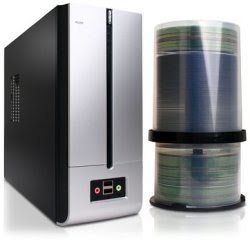Microsoft is currently cooking some modifications for the next stage of Windows Server 2008, formerly codenamed Longhorn. In this regard, the company informed that Windows SharePoint Services 3.0 will be stripped from Windows Server 2008. Those familiar with the development milestones of Microsoft's last 32-bit server operating system have had a chance to see that Windows SharePoint Services 3.0 has so far been a component of the product included by default in the platform. Julius Sinkevicius, Senior Product Manager, Windows Server Division, revealed, that with the upcoming testing release of Windows Server 2008, this will no longer be the case.
"As we're getting closer to release, Windows SharePoint Services 3.0 is returning to how it was previously available to Windows Server 2008 customers. Specifically, we are going back to making it available as a separate download that is available to customers at no additional charge. This is how Windows SharePoint Services was available to Windows Server 2003 customers (pre-R2). With the beta and RC0 versions of Windows Server 2008, we offered it in the Windows Server 2008 software. Starting with RC1 and going forward, Windows SharePoint Services 3.0 will have to be downloaded separately," Sinkevicius explained.
Joel Oleson, Microsoft Sr. Technical Product Manager, confirmed that, indeed, WSS 3.0 will not be made available as a component of Windows Server 2008 Release Candidate 1. Microsoft is currently offering for download the Release Candidate 0 of the server operating system. Windows Server 2008 is planned to be released to manufacturing in early 2008 and for official release in late February of the next year.
"We made this decision to allow customers to most conveniently obtain the technology while allowing Microsoft to have flexibility in the Windows SharePoint Services development process. If you have not looked at WSS 3.0, be sure to download it and peek around. It offers great collaboration, social computing and document management features and provides a rich composite application development platform based on our .NET technologies", Sinkevicius added.
Source:http://news.softpedia.com/news/Microsoft-to-Strip-Windows-Server-2008-RC1-69472.shtml
"As we're getting closer to release, Windows SharePoint Services 3.0 is returning to how it was previously available to Windows Server 2008 customers. Specifically, we are going back to making it available as a separate download that is available to customers at no additional charge. This is how Windows SharePoint Services was available to Windows Server 2003 customers (pre-R2). With the beta and RC0 versions of Windows Server 2008, we offered it in the Windows Server 2008 software. Starting with RC1 and going forward, Windows SharePoint Services 3.0 will have to be downloaded separately," Sinkevicius explained.
Joel Oleson, Microsoft Sr. Technical Product Manager, confirmed that, indeed, WSS 3.0 will not be made available as a component of Windows Server 2008 Release Candidate 1. Microsoft is currently offering for download the Release Candidate 0 of the server operating system. Windows Server 2008 is planned to be released to manufacturing in early 2008 and for official release in late February of the next year.
"We made this decision to allow customers to most conveniently obtain the technology while allowing Microsoft to have flexibility in the Windows SharePoint Services development process. If you have not looked at WSS 3.0, be sure to download it and peek around. It offers great collaboration, social computing and document management features and provides a rich composite application development platform based on our .NET technologies", Sinkevicius added.
Source:http://news.softpedia.com/news/Microsoft-to-Strip-Windows-Server-2008-RC1-69472.shtml
